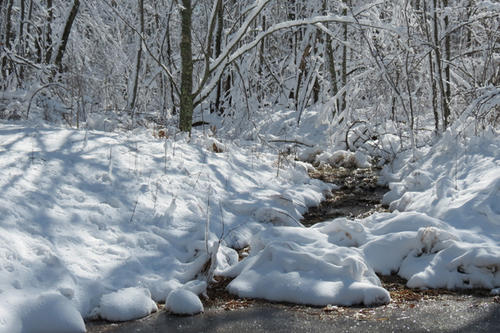
Once lead is in the environment it is difficult to remove. Despite legislation in the 1970s to reduce the amount of airborne lead, concentrations of lead in soils remains high in many parts of the United States. A new University of Minnesota and Gustavus Adolphus College study, published in Environmental Science and Technology, finds that dissolved organic material in topsoil—think decaying plants—plays a key role in cleaning it up.
James Cotner, professor in the College of Biological Sciences, co-authored the paper following a six-year study exploring the movement of lead stores in a boreal peatland near Grand Rapids, Minn. Cotner and his fellow researchers found that lead concentrations were lower in areas with greater levels of organic material from plants and decomposition in the soil.
“While surface soils are the first place that pollutants that are deposited onto ecosystems, our results suggest that they are also the first places where these pollutants are removed from the soils,” said Jeff Jeremiason, the lead researcher and faculty at Gustavus Adolphus. “The organic material in the soil binds to the lead and helps move it out when rain and snow falls in the forest.”
The team observed this change by collecting water, peat and soil samples weekly at the Marcell Experimental Forest near Grand Rapids from 2009-15. They also collected peat cores to measure the total mass of lead in the ecosystem. A main source of pollutant removal in ecosystems such as this is a water source. But the team’s work shows that while water is a key element in moving lead out of the soils, organic material can play a critical role as well.
“When inventories of pollutants build up in soils for a long period of time, the loss of those pollutants from those ecosystems via export in streams is likely to take a long period of time,” said Cotner. “Plant production and the accumulation of organic carbon in the soils are important mechanisms that facilitate the 'cleansing' of these pollutants from the soils.”=
While concentrating their research on lead in one forest, the team sees the broader potential impact this research points to across pollutants and ecosystems.
“The results are probably relevant to many ecosystems that are affected by atmospheric deposition of pollutants,” said Jeremiason. “Although our work focused on lead, we are observing similar things today with excess loading of nitrogen and phosphorus onto landscapes--it will take a long time to recover from those pollutants as well.”
Funding for this study was provided by the National Science Foundation, Northern Research Station of the U.S. Department of Agriculture Forest Service and Gustavus Adolphus College.
###
About the College of Biological Sciences
The College of Biological Sciences at the University of Minnesota is one of two colleges in the United States dedicated to the biological sciences with undergraduate majors and graduate programs that cover the spectrum of life from molecules to ecosystems.
- Categories:
- Science and Technology





